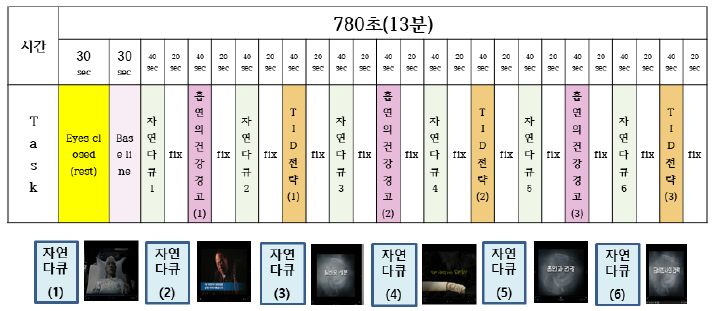Abstract
The annual anti-smoking education in schools is already a smoking cessation education for smoking adolescents. However, studies on the effectiveness of smoking cessation education in relation to the neuroscience characteristics of adolescents who smoke are insignificant. Therefore, the purpose of this study is to compare the differences in brain activity changes according to the types of anti-smoking education content for smoking adolescents. To this end, educational content types on smoking health warning and tobacco industry denormalization (TID) strategy were developed as tasks, and brain activity was measured and analyzed with fNIRS in 18 smoking adolescents. As a result of the study, it was confirmed that overall brain activity including the OFC and DLPFC areas was commonly decreased in the process of watching the smoking health warning educational video and the TID strategy training video. This is related to decreased activity of OFC and DLPFC domains, which are related to the induction of nicotine cravings in smoking adolescents. In addition, in the process of watching the smoking health warning education video and the TID strategy education video, as the comparison result of brain activity control by subtraction after t-verification, the TID strategy educational video showed less decrease in activity in the DLPFC area, that is, a relatively increased activity compared to the smoking health warning education image. The TID strategy educational video suppresses smoking behavior and promotes smoking cessation behavior compared to the health warning education video, because the DLPFC area, which is responsible for cognitive regulation and executive control of nicotine craving, effectively performed cognitive regulation on nicotine craving. This study can provide information on actual brain changes and differences depending on the types of anti-smoking education for smoking adolescents.
Figures & Tables

Fig. 1. Paradigm for presenting the task of guided


